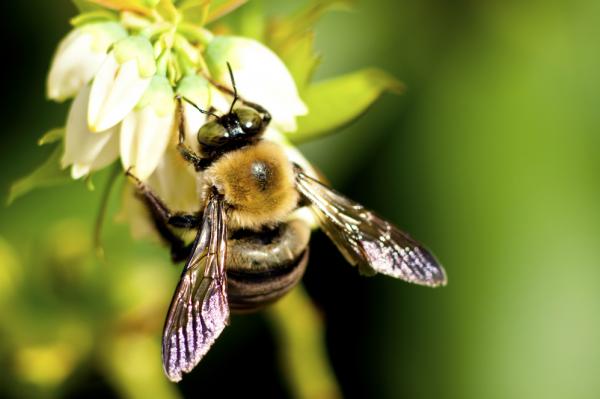
Researchers found honey bees use a sophisticated alarm system to warn their hive mates about predator attacks. Photo by Betty Shelton/Shutterstock
SAN DIEGO, March 25 (UPI) -- Honey bees can warn their friends of varying threat levels using a sophisticated alarm system.
A team of biologists in the United States and China determined that honey bees communicate danger via short vibration pulses, usually by headbutting their peers. Different vibrations correspond with varying threats.
"Surprisingly, this signal encodes the level of danger in its vibrational frequency, its pitch, and the danger context through the duration of each pulse," lead researcher James Nieh, a professor of biology at the University of California, San Diego, explained in a news release.
The latest findings, detailed in the journal PLOS Biology, build on Nieh's study of the European honey bee, Apis mellifera, conducted six years ago. Nieh observed bees using signals to inhibit recruitment after being attacked near a food source.
His new research confirms that the bees were using stop signals to keep their fellow foragers from returning to a place where danger lurks. The latest study also confirms that other honey bee species employ stop signals.
In partnership with Ken Tan, a professor at Xishuangbanna Tropical Botanical Garden and Chinese Academy of Science, Nieh documented Asian honey bee, Apis cerana, using stop signals after being attacked by wasps.
Tan and Nieh studied Asian honey bees after being attacked by the Asian giant hornet or "yak-killer" wasp, Vespa mandarinia, the world's largest hornet, as well as the Asian hornet or yellow-legged hornet, Vespa velutina, a smaller hornet.
"We hypothesized that bigger predators would pose a bigger threat and would change stop signaling, perhaps by producing more signals when attacked by a large predator," Nieh said. "However, we were very surprised to find that these Asian bees not only produced more stop signals, they also produced different kinds of stop signals."
Bees used higher pitched stop signals to warn their peers of larger predators, while longer stop signals connoted that threat was closer to the hive.
"This is the first demonstration of such sophisticated inhibitory signaling or alarm signaling in an insect," Nieh said. URL: http://www.upi.com/Science_News/2016/03/25/Honey-bees-use-sophisticated-alarm-system-to-communicate-danger/9481458931640/ |

